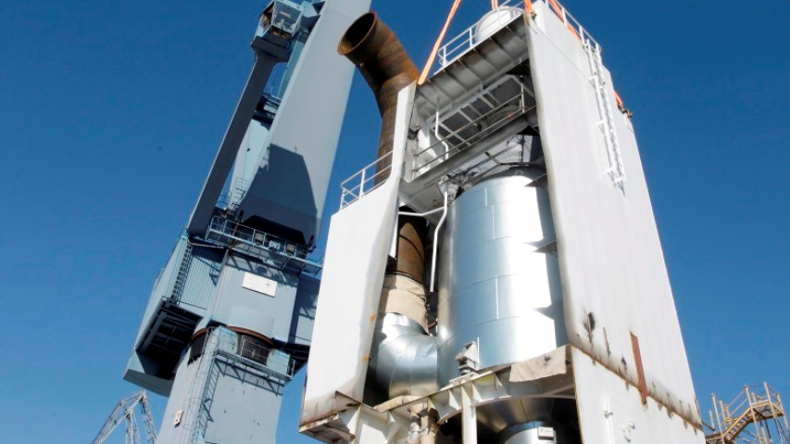Pipework problems are requiring costly repairs to scrubber systems less than six months after installation in some cases, corrosion experts have told Lloyd’s List.
SCRUBBER pipework is having to be replaced less than six months after installation because of corrosion problems that experts have told Lloyd’s List is almost impossible to predict, and not widely understood by either shipowners or installation teams.
Several major classification societies are tracking an uptick in scrubber-related issues and while no class society is prepared to reveal hard numbers, experts within societies have confirmed there have been several instances of corrosion related to quality issues traced back to the installation.
Scrubber manufacturers and owners who have installed systems have told Lloyd’s List there are no issues with systems, many of which have operational experience dating back almost a decade.
However, the recent acceleration of scrubber installations to meet the 2020 sulphur cap deadline has resulted in a significant increase in corroded pipework repairs handled by companies being called in to fix problems.
“Corroded scrubber pipework and discharge outlets is a serious problem that is not widely understood by people installing these systems, and we’re seeing more of it,” said Boud Van Rompay, chief executive of Hydrex, an underwater repair and corrosion specialist.
“Piping is being eaten by corrosion because it is handling acidic residue… the problems we are seeing are quite astonishing and the speed of the corrosion is like nothing I’ve seen before,” he told Lloyd’s List.
According to Gary Rawlings, a marine engineering expert at the Bureau Veritas consultancy TMC Marine, corrosion occurs because of the acidic nature of the residue being processed, but the problem is not with the manufacturing of the scrubber itself, rather it is the ancillary piping and pump mechanisms that can cause issues.
Corrosion can happen if pipes are not cleaned properly prior to coating, or if the coating has not been properly applied, or if damage occurred, for example the equipment was bumped during the installation, he said at a conference during London International Shipping Week.
“Materials and coating choices are critical to avoid issues,” he said, but pointed out that expensive corrosive-resistant materials are becoming harder to source and some manufacturers have stopped taking new orders as lead times can be four months or longer.
“One of the key problems is that there is no reliable way to predict the speed of the corrosion and that can result in safety issues,” said Mr Van Rompay.
Mounting delays at shipyards to retrofit scrubbers on vessels are already causing costly delays for owners racing to hit the January 1, 2020 deadline for sulphur emission compliance. The average time for installation is currently running at around 40 days depending on the type of ship.
Despite the concern from corrosion experts, owners who have already installed systems report no significant downtime due to repairs and one major shipowner has cautioned that much of the anti-scrubber rhetoric being widely disseminated around the industry can be pinned on stakeholders with a vested interested in discrediting scrubber systems.
Following an engine failure aboard the 2016-built, 209,200 dwt bulk carrier Helena Oldendorffearlier this month in the Singapore Strait, industry rumours were rife that the incident was related to the scrubber installation.
A spokesman for owners Oldendorf has denied that is the case but also pointed out that “unscrupulous people have made false claims about the incident”, pointing to the political agenda that still colours much of the industry debate around scrubbers.
When Lloyd’s List approached the Clean Shipping Alliance, a lobby group formed last year by major shipping companies that have invested in scrubber technology ahead of the 0.5% sulphur cap, for a comment, a spokesman pointed Lloyd’s List to DFDS — a company that reports almost no downtime due to its scrubbers.
“As one of the first commercial operators of marine scrubber systems, ferry operator DFDS has just celebrated 10 years of continued operation of its first scrubber installation, on Ficaria Seaways. During this period the scrubber exceeded 55,000 working hours. DFDS also looked at scrubber off-hire for its fleet for the 12 months ending June 30, 2019. Results show a downtime of 0.0012%,” DFDS’s environment and sustainability director Poul Woodall told Lloyd’s List in a statement.
Approximately 3,000 scrubbers are forecast to be installed by the end of the year as a means of complying with the International Maritime Organization’s low-sulphur rules and the International Energy Agency has estimated that up to 30% of the world fleet will ultimately install a scrubber.

